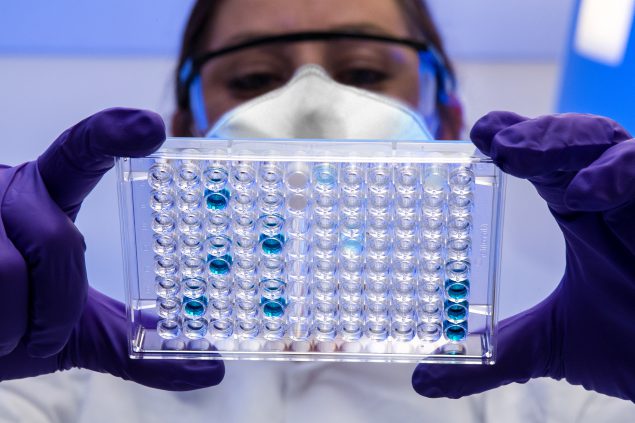Using Antibody Tests for COVID-19
Using Antibody Tests for COVID-19
CDC has developed interim guidance for how healthcare providers, laboratories, and public health staff should use antibody tests. These tests look for the presence of antibodies, which are proteins made in response to infections. Antibodies are detected in the blood of people who are tested after infection; they show the body’s efforts to fight off a specific infection.
The virus that causes COVID-19 is new, and what we know about it changes rapidly. This guidance will be updated as more information becomes available.

- In general, a positive antibody test is presumed to mean a person has been infected with SARS-CoV-2, the virus that causes COVID-19, at some point in the past. It does not mean they are currently infected.
- Antibodies usually start developing within 1 to 3 weeks after infection.
- We don’t have enough information yet to say how protected someone might be from being infected again if they have antibodies to the virus.
- Confirmed and suspected cases of reinfection with the virus have been reported, but remain rare.
- Healthcare providers who use antibody tests must know how the different tests work and use caution when interpreting test results:
- If someone tests positive for SARS-CoV-2 antibodies but does not really have those specific antibodies, the result is a false positive. Similarly, if someone tests negative for SARS-CoV-2 antibodies but does really have those specific antibodies, the result is a false negative.
- FDA has authorized antibody tests for this virus that have been submitted for their review. But these tests are not 100% accurate and some false positive results or false negative results may occur. False positive results can be minimized by choosing an antibody test with high specificity and by testing populations and people who are likely to have had COVID-19.
- Antibody test results should not be used to diagnose someone with an active infection.
- The Interim Guidance for COVID-19 Antibody Testing in Clinical and Public Health Settings provides detailed information on how to make the best use of antibody tests.
- People who receive positive results on an antibody test but don’t have symptoms of COVID-19 and have not been around someone who may have COVID-19 are not likely to have a current infection. They can continue with normal activities, including work, but still take steps to protect themselves and others.
- People who receive positive results on an antibody test and who are currently or recently sick or have been around someone with COVID-19 should follow CDC recommendations on caring for themselves and protecting others, and when they can be around other people again.
Do:
- Until scientists get more data on how much protection antibodies provide against being infected again with this virus, everyone should continue to take steps to protect themselves and others, including wearing a mask, staying at least 6 feet away from other people outside of their home, and washing hands, even if they have had a positive antibody test.
- People who wear personal protective equipment (PPE) at work should continue to wear PPE, even if they test positive for antibodies to the virus.
Don’t:
- Antibody test results should not be used to determine if someone can return to work.
- Antibody test results should not be used to group people together in settings such as schools, dormitories, and correctional facilities
Last Updated Nov. 3, 2020


